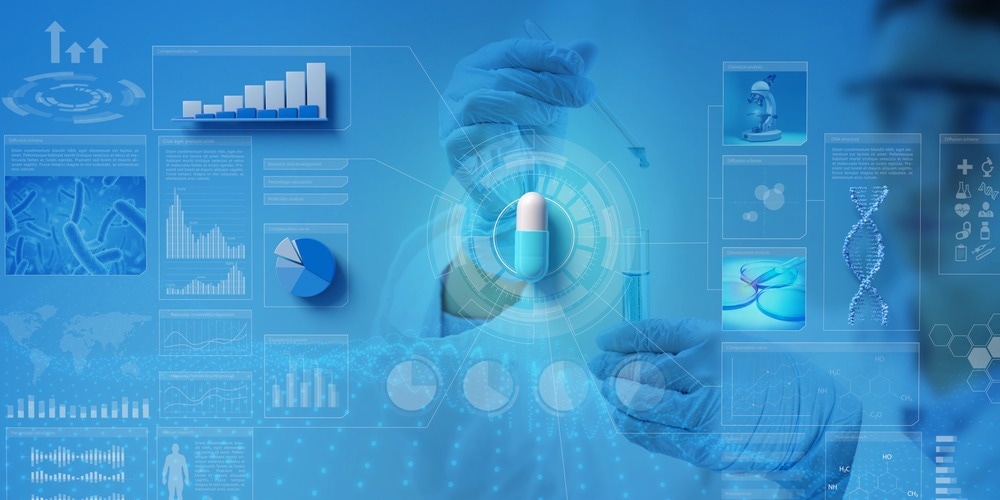Drug discovery is a multidisciplinary enterprise involving multiple steps, including target drug identification, drug response, and validation. Over the last few years, the pharmaceutical industry has boosted the emergence of new drug discovery and development strategies.
The novel practices in drug discovery put a special emphasis on collaborative efforts between diverse disciplines that range from, for example, bioinformatics to experimental biology or from genomics to neurosciences. These drug strategies should ideally provide accurate coordination of such collaborative efforts and funding support from both public and private sources.

Image Credit: Andrii Yalanskyi/Shutterstock.com
What are Drug Development and Drug Discovery?
The expression 'drug development' commonly applies to the development of procedures and practices aimed at generating new drugs, devices, and treatments that have the potential to target specific cells or tissues to cure and/or prevent diseases such as diabetes or cancer. Moreover, drug discovery involves laboratory practices such as screening, pre-clinical drug testing, and clinical trials, which are used to discover and assess the efficacy and safety of promising drugs.
Drug development is a complex and highly regulated process that can expand more rapidly when collaborative efforts between the public and private sectors synergistically work together under an innovative framework. Collaboration during drug discovery reduces the expensive costs of drug development and speeds up the processes from discovery to full-scale manufacturing.
Drug development involves a network of scientists and professionals working together at all stages of development, from target identification to pre-clinical testing and early and late clinical trials. Molecular biologists are professionals who can design and carry out experiments to analyze and assess the efficiency of different materials and drugs. Bioinformaticians are crucial for handling life science data (e.g., sequencing datasets) and complex software systems in pre-clinical and clinical stages.
Geneticists can determine how the properties of the genetic material (DNA), including gene activation/inactivation, may alter drug sensitivity or cause adverse reactions. Biomanufacturers are able to determine the best practices to apply during each phase of the drug development process by assessing risk-based approaches and preventing risks or reducing them to acceptable levels.
Research and Development in Collaborative Drug Discovery
The phrase "research and development" (R&D) is commonly associated with strategies and innovative practices aimed at developing procedures and products through a step-by-step scientific approach. In drug discovery, R&D involves groups of scientists consisting of interdisciplinary teams capable of developing new drugs and exploring how such products can be used to alter the functioning of complex biological systems. This process consists of sequential stages where pre-clinical and clinical studies are conducted to obtain the final product, a safe and effective drug. The drug development process must follow strict ethical and safety standards before drug approval and release, which are covered by national and international regulations.
During drug development, one of the major challenges facing the pharmaceutical industry is likely associated with how higher expenditures on research may represent a factor behind the development of biotechnological applications. Collaborative efforts between multidisciplinary groups are crucial for problem-solving and innovation during this process.
Cooperation and collaboration are made between software developers, bioinformaticians, and bench scientists (pharmacologists, geneticists, molecular biologists, neuroscientists, etc.), who work together to optimize R&D strategies and productivity.

Image Credit: paulista/Shutterstock.com
The World of Drug Discovery
Interdisciplinary teams work to meet a common objective, primarily associated with developing and testing new drugs capable of correcting defective signaling pathways. For instance, bioinformaticians can manage different types of data (e.g., differentially gene expression profiles) to predict and assess how new drugs influence cellular functions. Molecular biologists test drugs' effectiveness, safety, and efficacy to reverse disease states and recover cellular homeostasis. Geneticists determine how genetic and epigenetic profiles can be altered by drugs, which may eventually be used to restore a healthy cellular environment.
The public academic sector is already working with private partnerships to deliver new drugs that clinical trials can test in private clinical settings (and vice versa). An example of this collaborative initiative is the recent development of anti-tumor necrosis factor (TNF) antibodies for treating rheumatoid arthritis and psoriasis, which were first developed at the Kennedy Institute from the Imperial College London then tested in private settings. Experiences like this type are multiplying worldwide, becoming a habitual practice in the drug development sector.
The Future of Collaboration Within the Drug Discovery Sector
The private-public collaboration between research institutes, universities, and other research organizations play a crucial role in drug development. It has been shown that drug discovery can be more dynamic, competitive, and sustainable through academia-pharmaceutical industry partnerships. These associations involve academics, private enterprises, regulatory authorities, healthcare providers, and society.
Within the public sector, there is an increasing understanding that public-private associations play a fundamental role during all stages of development, including target identification, validation, and large-scale production. The main challenge now is building "networks of opportunity" to improve the cooperation capabilities between the private pharmaceutical industry, the academic world, and government agencies.
Continue Reading: The Current Global State of Drug Discovery
Last Updated: Nov 4, 2024